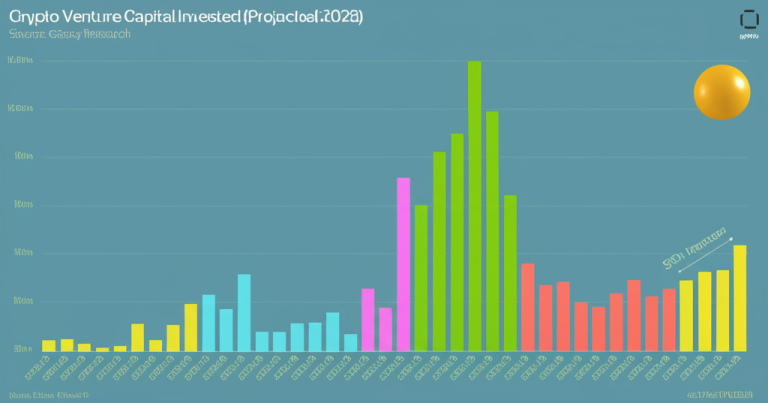The U.S. Crypto Landscape in 2025: A Strategic Analysis
Introduction: The Dawn of a New Era
The year 2025 stands as a pivotal moment in the evolution of the U.S. cryptocurrency landscape. The nation finds itself at a crossroads, where regulatory shifts, technological advancements, and strategic policy decisions converge to shape the future of digital assets. This analysis delves into the intricacies of these developments, examining the policy framework, industry transformations, technological innovations, and the challenges that lie ahead.
Policy Revolution: From Adversary to Architect
Executive Order Resets Priorities
The executive order signed on January 23, 2025, marks a significant turning point. It establishes three foundational pillars: the promotion of permissionless blockchain development, the protection of self-custody rights, and the supremacy of dollar-backed stablecoins. Notably, the order bans the research and development of Central Bank Digital Currencies (CBDCs), signaling a clear shift away from centralized digital currencies. This new framework replaces the enforcement-first approach with a governance model that prioritizes innovation and market-driven solutions.
Bitcoin Reserve Strategy
In March 2025, the U.S. Treasury Department announces the establishment of two new reserves: the Strategic Bitcoin Reserve and the Digital Asset Stockpile. These reserves, funded initially with seized crypto assets, signify the formal recognition of cryptocurrencies as sovereign-grade assets. The Strategic Bitcoin Reserve aims to hold a significant portion of the global Bitcoin supply, positioning the U.S. as a major player in the digital asset market. The Digital Asset Stockpile, on the other hand, is designed to support operational needs and foster innovation within the crypto ecosystem.
Legislative Momentum Accelerates
Senator Lummis’ Bitcoin Act proposes the acquisition of over $50 billion worth of Bitcoin over the next five years, a move that could significantly alter the U.S. government’s relationship with digital assets. Concurrently, the President’s Working Group on Financial Markets is tasked with delivering federal regulatory guidelines by mid-2026. These parallel legislative efforts aim to provide a comprehensive regulatory framework that supports the growth and integration of cryptocurrencies into the mainstream economy.
Industry Transformation: Compliance Meets Nationalism
Domestic Mining Push
The U.S. government initiates a domestic mining push, targeting over 50% of the global hash rate through energy subsidies and regulatory incentives. This strategy aims to reduce dependence on foreign mining operations and enhance national security. States like Texas, with abundant renewable energy resources, are poised to become new mining hubs, driving economic growth and technological innovation.
Stablecoin Standardization
The regulatory landscape for stablecoins undergoes significant changes. Dollar-backed stablecoins face stricter audit requirements, ensuring transparency and stability. This move aims to create a standardized framework for stablecoins, fostering trust and adoption among institutional investors and consumers alike. The government also encourages the development of innovative stablecoin products that comply with regulatory standards, positioning the U.S. as a global leader in digital asset innovation.
Exchange Compliance
Major cryptocurrency exchanges like Binance and Coinbase ramp up their compliance efforts, dedicating significant resources to regulatory adherence. Binance reports that a quarter of its global workforce is focused on compliance, ensuring that the exchange operates within the legal frameworks of multiple jurisdictions. Coinbase and other U.S.-based platforms also enhance their risk management systems, promoting a safer and more transparent trading environment.
Technological Frontiers Reshaping Finance
DeFi Institutionalization
Decentralized Finance (DeFi) protocols gain traction among institutional investors. JPMorgan pilots the use of Automated Market Maker (AMM) mechanisms for foreign exchange liquidity pools, leveraging private blockchain technology for settlement. This integration of DeFi into traditional financial systems marks a significant step towards the mainstream adoption of decentralized technologies.
NFT Taxation Shift
The taxation of Non-Fungible Tokens (NFTs) undergoes a significant shift. Collectible NFTs face higher capital gains rates, prompting project developers to redesign their tokenomics to mitigate the impact of these tax changes. This regulatory adjustment aims to create a more equitable taxation framework for digital assets, balancing innovation with revenue generation.
Layer-2 Breakthroughs
Layer-2 scaling solutions, particularly those based on Zero-Knowledge Rollups (ZK-Rollups), achieve remarkable throughput and cost efficiency. These networks handle over 20,000 transactions per second at sub-cent costs, making them viable for large-scale commercial applications. The advancements in Layer-2 technology pave the way for the widespread adoption of decentralized applications (DApps), driving innovation and growth in the crypto ecosystem.
Challenges Ahead: Navigating Uncharted Territory
The U.S. faces several challenges in its quest to become a global leader in the crypto landscape. Legislative uncertainties, energy debates, and global competition pose significant hurdles. The slim congressional margins increase the risk of delays in critical legislation, potentially stalling the progress of regulatory frameworks. The energy-intensive nature of mining operations clashes with renewable energy goals, requiring a balanced approach to sustainability and innovation. Additionally, the European Union’s MiCA framework sets alternative regulatory benchmarks, challenging the U.S. to maintain its competitive edge.
Conclusion: The Make-or-Break Year
As the U.S. navigates the complex landscape of cryptocurrency policy, industry transformation, and technological innovation, 2025 emerges as a make-or-break year. The strategic decisions made in this period will determine whether the U.S. can establish itself as a global leader in the digital asset revolution or fall behind in the rapidly evolving Web3 landscape. The convergence of executive actions, legislative efforts, and technological advancements sets the stage for a pivotal moment in the nation’s economic and technological future. The outcome of this journey will shape the global financial order for decades to come, defining the U.S.’s role in the digital age.
資料來源:
[1] koinly.io
[2] tokentax.co
Powered By YOHO AI





